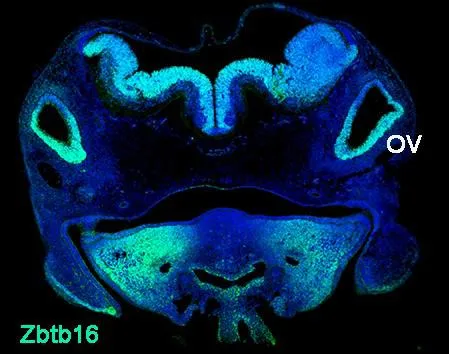It is unusual that regulatory sections of DNA, like the ones we studied, are highly conserved across species. The fact that we find them to be very similar from birds to humans indicates their critical role.
Professor Andrea Streit, expert in developmental neurobiology at King's College London
11 April 2025
Candidate deafness genes revealed in new study
New candidate genes which could be responsible for deafness have been identified.

Congenital deafness (hearing loss from birth) is common, impacting around one in 1,000 babies born in the UK1. The condition affects communication, social and cognitive development of children and general quality of life. It is largely caused by mutations in genes, but many of these genes remain to be discovered. Understanding the exact mutations that cause deafness could hold the key to devising treatments.
Professor Andrea Streit, expert in developmental neurobiology at King's College London, said: “Human genetics approaches have identified hundreds of ‘deafness loci’ – regions on chromosomes associated with deafness. These regions contain many genes, and the challenge is to identify the gene that causes deafness when mutated.”
The study, led by King’s College London in collaboration with George Washington University, US, discovered new candidates for these so called ‘deafness genes’.
With previous research identifying mutations in a protein, Six1, causing hearing loss, the team focused their investigation on the genes regulated by this protein.
The researchers used computer-based methods to predict more than 150 potential Six1 targets in ear progenitor cells (cells which eventually form the entire inner ear) from chick embryos.
Selecting four of those targets for further investigation, they revealed that Six1 binds to the DNA regions that regulate their expression and that reducing levels of Six1 stopped these genes from being activated.
The team then showed that the vast majority of the genes found in chick are also expressed in human ear progenitors, and that a quarter of them fall into the chromosome regions associated with deafness.
Professor Andrea Streit said: “It was very exciting to find that some of the genes regulated by Six1 are located in regions deafness loci. This makes them priority candidates for being causative genes of congenital hearing loss.”
The scientists also discovered that some of the DNA regions that control Six1 target gene expression are conserved in birds and humans. This finding suggests that despite 600 million years of evolution, Six1 and its molecular mechanisms are similar in both birds and humans. They may therefore control fundamental biological processes in ear development.
The team believe further research into Six1 and the genes it regulates could provide insight into the molecular mechanisms that control how the ear normally develops.
Read the study https://journals.biologists.com/dev/article/152/7/dev204533/367679/Targets-of-the-transcription-factor-Six1-identify

